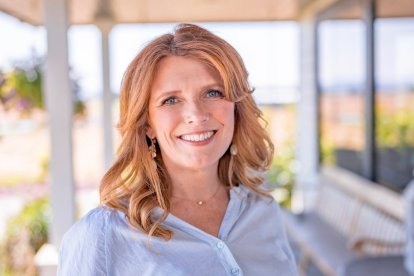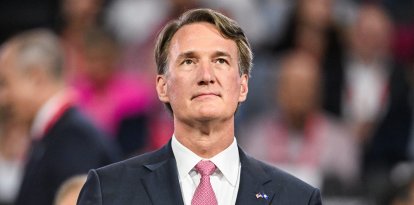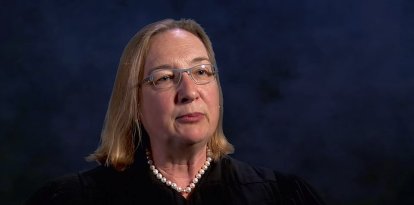The six states that change the map for governors in 2022
'Real Clear Politics' forecasts that five states will go from blue to red. If we add Arizona, where the favorite was a Democrat, we see the map of political change.

Cristine Drazan / Oregon State University (Flickr).
The rising Republican tide reaches the House of Representatives (Real Clear Politic gives them a minimum of 225) and the Senate (53-47), but also to the gubernatorial elections. There are six elections to which we should pay special attention this November because they can change the political map.
In one of them, the Democratic candidate was leading in the polls, but the Republican's push has managed to turn it around: Arizona. The other elections are in states where the governor is a Democrat and, according to RCP forecasts, could become a Republican. According to RCP, after the November elections, there will be 31 Republican governors and 19 Democratic governors.
At a time when the two major parties have no clear candidate for 2024, the gubernatorial slate may provide the future President of the United States. These are the states we need to look at:
Arizona
Of all the gubernatorial races, the most notable, without a doubt, is Arizona. It is one of five states that Cook says are now tied; the other four are Kansas, Nevada, Oregon, and Wisconsin.
But what gives this election special interest is the personality of the Republican candidate, Kari Lake, who now leads the polls by a small difference in the polling average: 1.6 points, according to RCP, and 1.2 according to 538. RCP, the dean of poll analysis, gives the win to Kari Lake, as she corrects the pro-democratic bias in the polls.
Kari Lake, a journalist, offers great dialectical skills, which she exercises with the most critical press and would like to demonstrate against her Democratic rival, Katie Hobbs. But Hobbs refuses to debate her.
One of the topics of the campaign has been the doubts Lake has shown about the 2020 election results. The person in charge of controlling the electoral process was precisely Katie Hobbs, Arizona's Secretary of State.
On the other hand, and as polls show, Arizonans are more concerned about the issues the Republican candidate talks about, such as the economy and inflation, than they are about abortion and other social issues that are in Hobbs' speeches.
Kansas
Laura Kelly is running to renew her seat as governor of Kansas. RCP gives her a small lead over her Republican challenger: Dereck Schmidt. And there is a third candidate, a libertarian, named Seth Cordell, plus an independent. The 270 to win and 538 websites give a tie in voting intentions to the two candidates with the most support.
Nevada
In mid-August, Nevada Democratic gubernatorial candidate Steve Sisolak was ahead of Republican Joe Lombardo by 3.7 points. This is a notable advantage, but not a decisive one. Especially because both candidates received relatively low voting intentions: 41.7 points to 38.0.
Both have been expanding their base, but Joe Lombardo has done it faster. And, in fact, he already leads Democrat Sisolak by 2.3 points, according to RCP, which gives the victory to the Republican. The average of 538 shows a tie between the two.
Oregon
After nine terms of Democratic state government, Oregon appears to be leaning toward a Republican candidate: Christine Drazan. Drazan has shown strong opposition to Democratic policies.
Voters are dissatisfied, especially with security. Between 2019 and 2021, the number of murders in Portland increased by 107% after Democrats imposed the police defunding policy.
Governor Kate Brown imposed very tight restrictions during the pandemic, which negatively impacted Nevada's economy, which is heavily dependent on tourism. Christine Drazan's campaign has only had to link Brown to Democratic rival Tina Kotek to lead in the polls.
RCP awards the victory to Drazan with a 2.4-point lead over Tina Kotek (D). Betsy Johnson, a former Democrat, is running as an independent candidate.
Wisconsin
The Badger State is overwhelmingly Democratic. And it looked like a safe state for Gov. Tony Evers, who was 2.2 points ahead of Republican Tim Michels on Sept. 27. That difference has vanished, and they are tied in the polls. RCP gives Michels the win, while 538 gives Evers a better chance of victory, although they are virtually evenly matched.
In addition to Wisconsin, Oregon, and Nevada, there is another state that has a Democratic governor and could have a Republican one as of January 2023. This is the case in Michigan.
Michigan
Gretchen Whitmer (D) is the state's governor and was a clear candidate to renew her seat. On August 22, he trailed the Republican candidate, Tudor Dixon, by 17.6 points. Unbeatable. On October 8, one month before the elections, this difference had been reduced to 11.3 points. The latest RCP data shows a difference between the candidates of only 2.6 points in the average of the polls.
Real Clear Politics gives the Republican Tudor Dixon as the winner, which would be a real surprise. With 15 days to go before the elections, and correcting for the bias of the polls, RCP gives Dixon a two-and-a-half point difference.
RECOMMENDATION





















